Recycling DIY Contest-Three Wise Monkeys: From Legend to Recycled Material. First Entry /Tres monos sabios: de la leyenda al material reciclado. Primera propuesta [ENG-ESP]
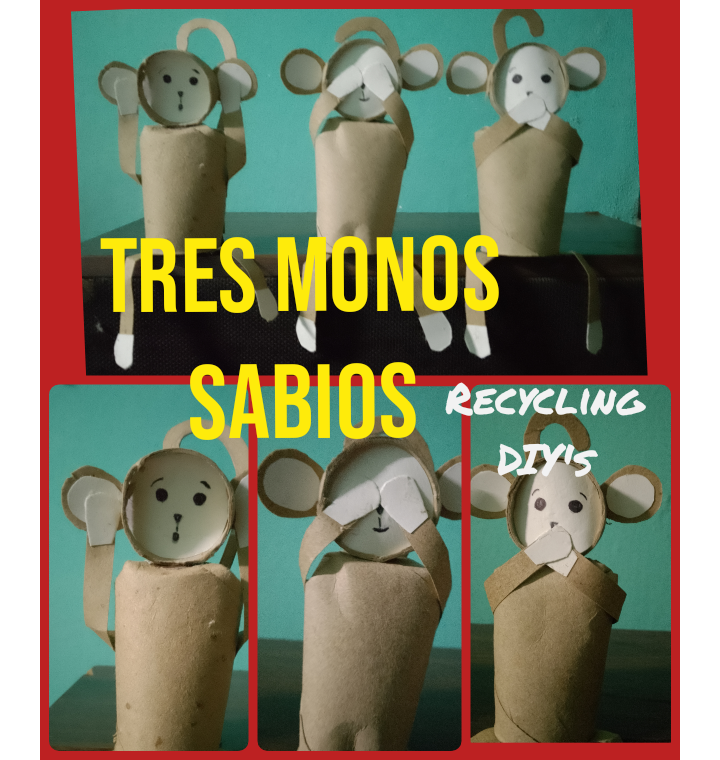
Japanese legend tells that among the ways the gods watched over human desires and actions was to send three messengers of wisdom. To ensure that they were close to humans, the messengers chosen were three monkeys who also had one flaw and two virtues.
Kikazaru, the deaf one, kept an eye on the evil deeds, which he then communicated to Mizaru.
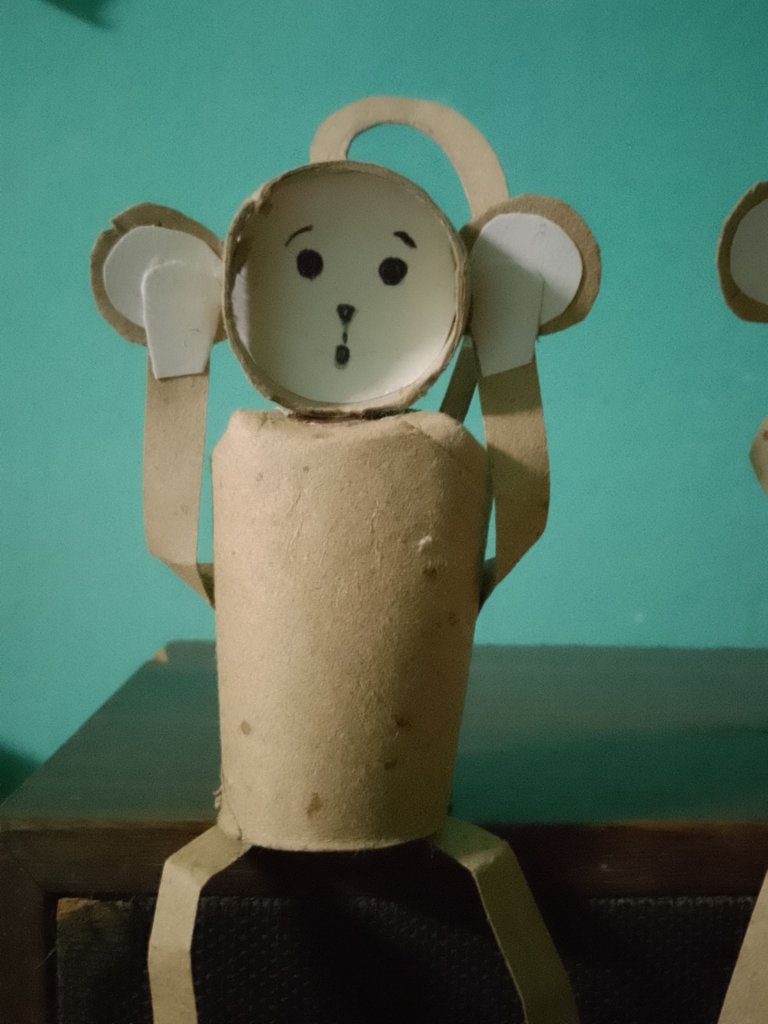
Mizaru, the blind one, didn't need sight because he was in charge of listening to the message and transmitting it to Iwazaru.
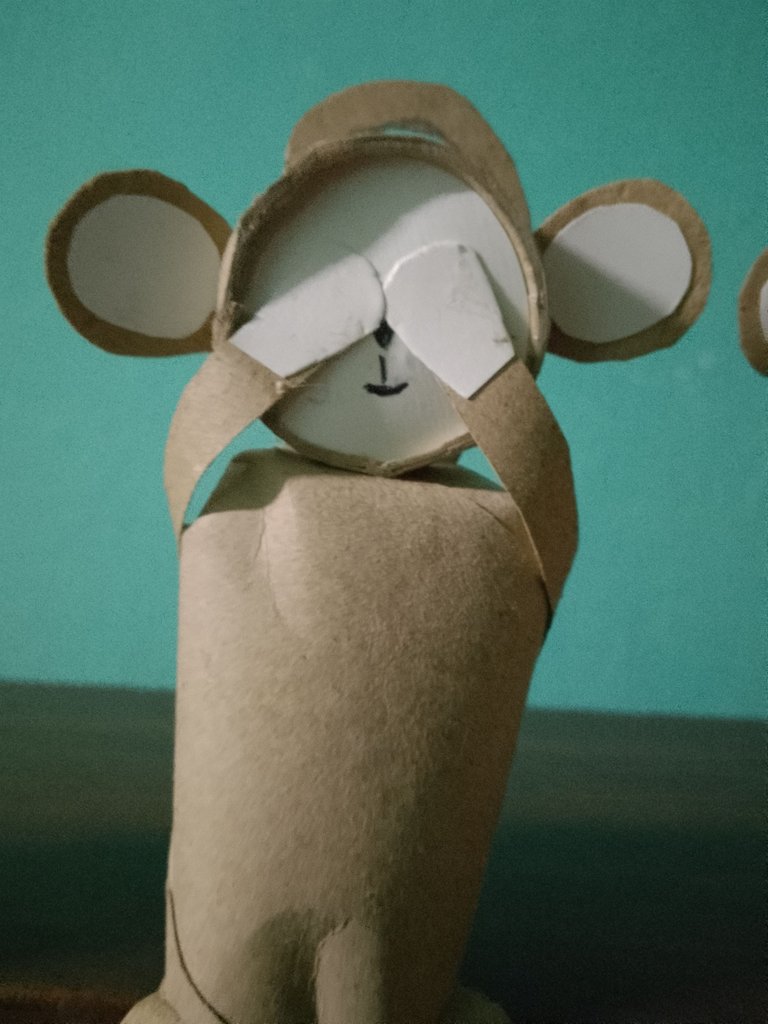
Iguazaru, the mute one, was responsible for receiving complaints and deciding for the gods the punishment to be imposed on the wickedness of mortals.
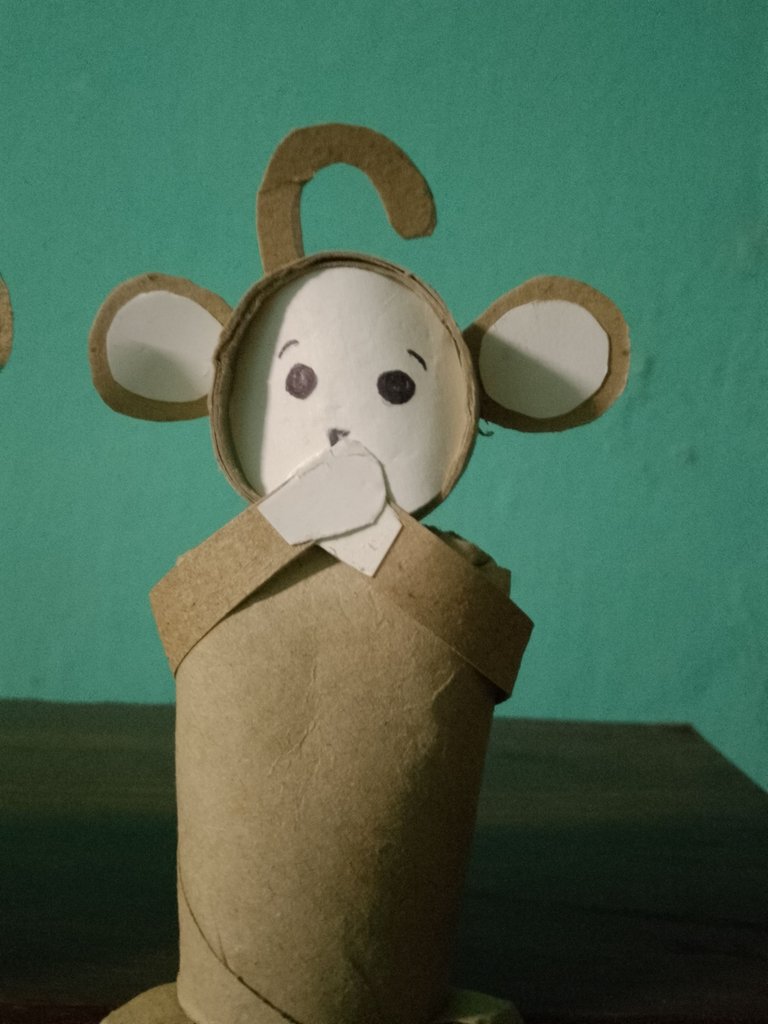
In this way, the hierarchy of each one is defined, and obviously, any disruption of the order means a breakdown in the channel of communication.
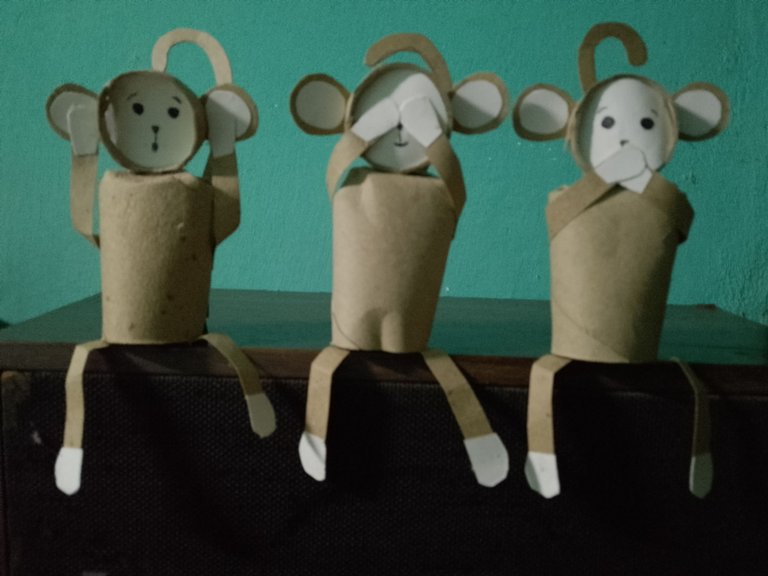
Asian culture places a certain emphasis on the path to wisdom, and inspired by this legend, today I decided to reuse waste materials to create sculptural figures that represent the three pillars of wisdom, while also trying to use the material with equal intelligence. I believe that recycling, the organic transformation of objects and resources that we consider useless into decorative or utilitarian objects, is a way to apply creativity and, to a greater degree, wisdom. It is an act of environmental respect.
So, I created my reinterpretation of these well-known characters using toilet paper tubes, cardboard scraps, and a glue stick.
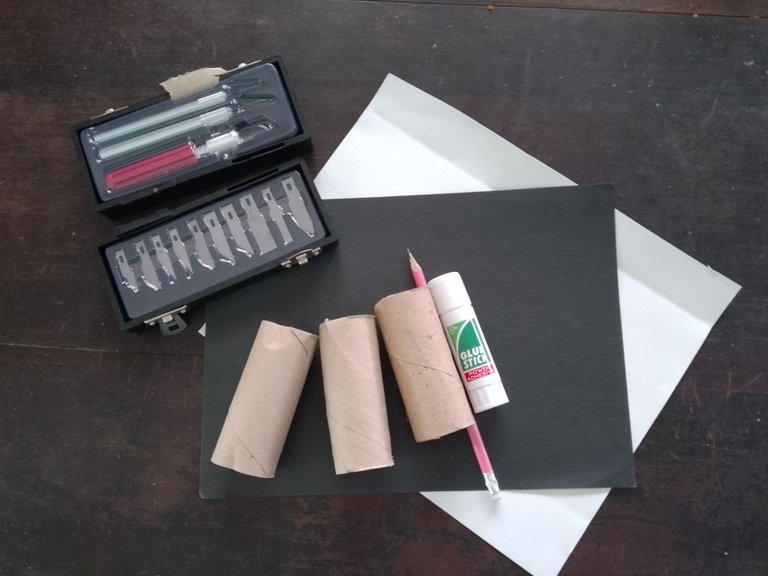
The simplicity of this project allows anyone to try it. How do I do it? I'll show you below.
First, we'll take three toilet paper tubes and, using a utility knife, cut a 1cm loop from one end. This loop will form the structure for the monkey's head.
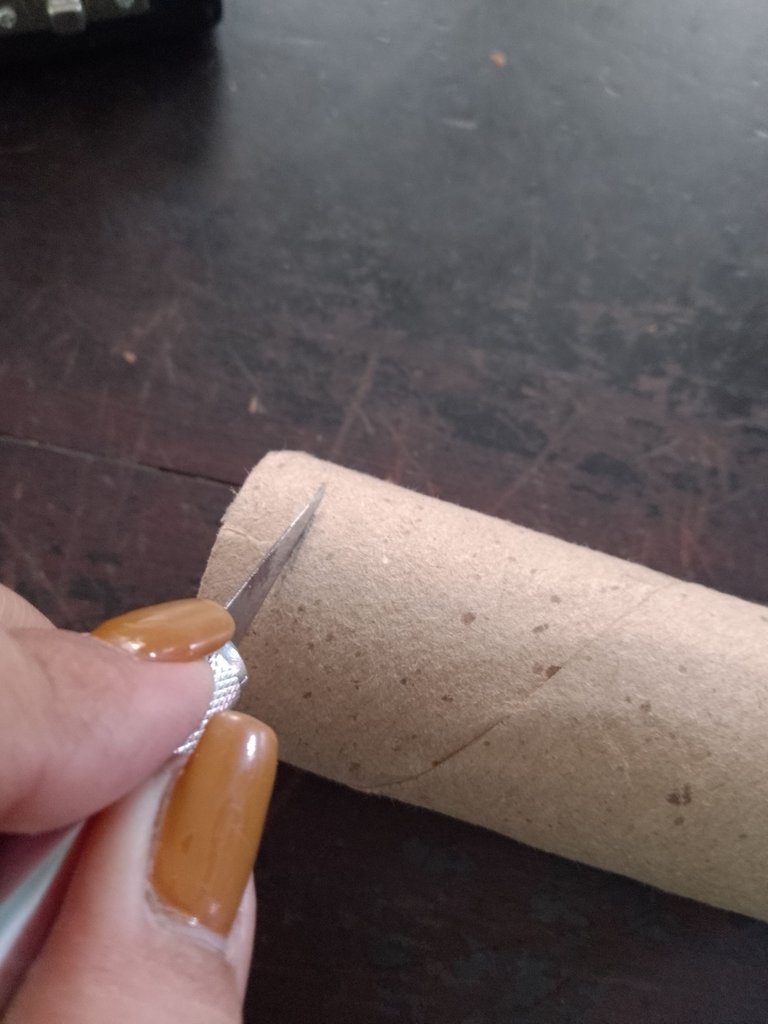 | 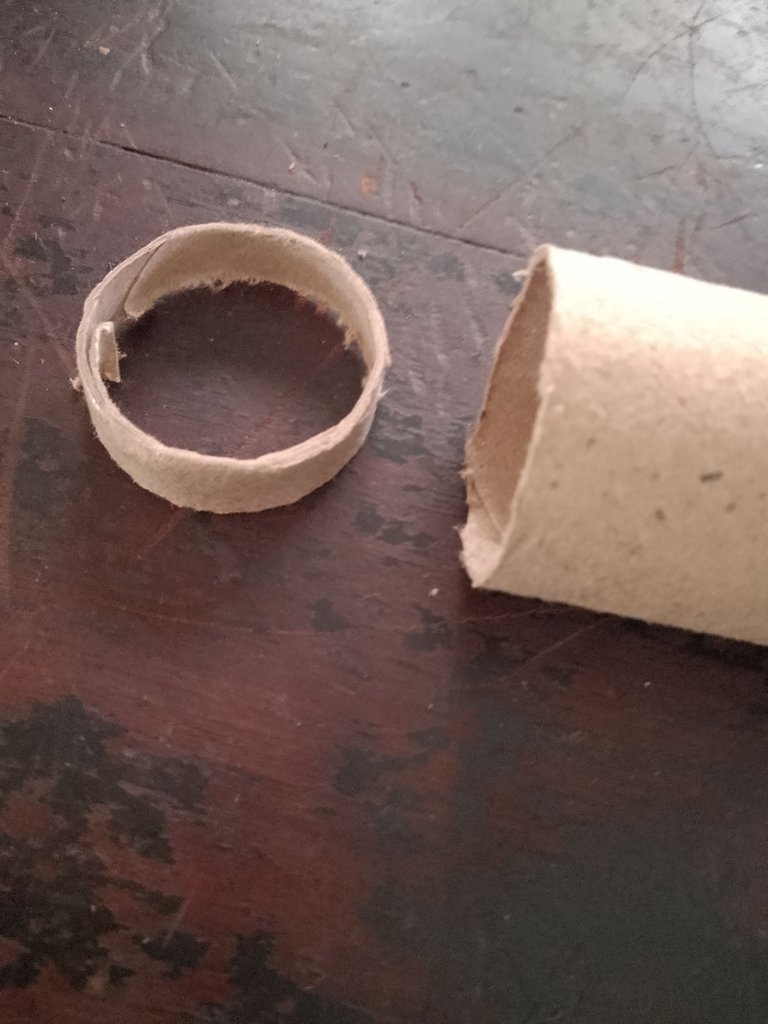 |
|---|
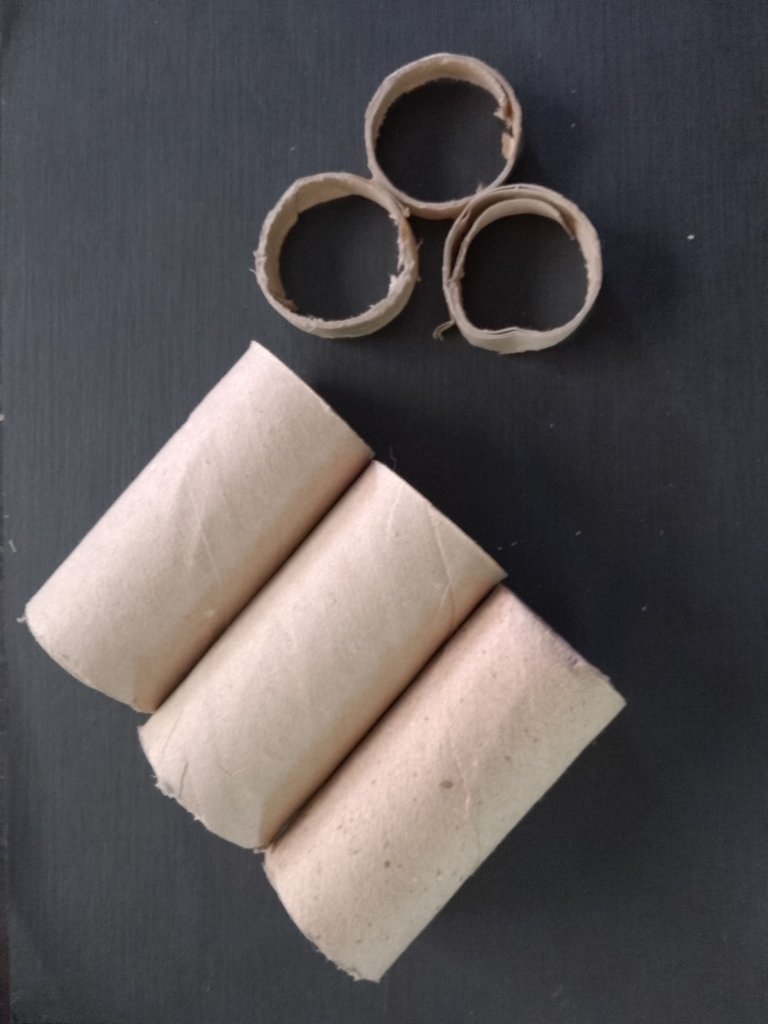
Then, we'll take scraps of manufactured cardboard and cardstock and mark and cut 1cm strips and circles, respectively. These pieces will be the monkeys' legs and faces.
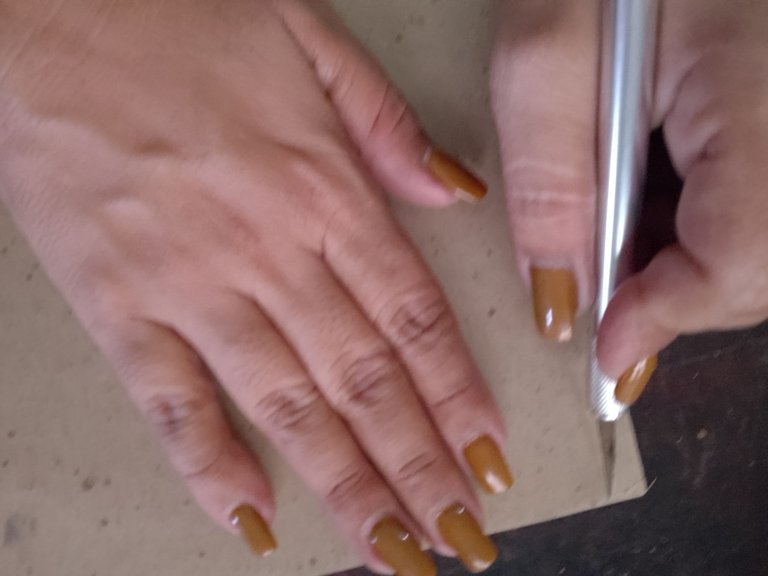 | 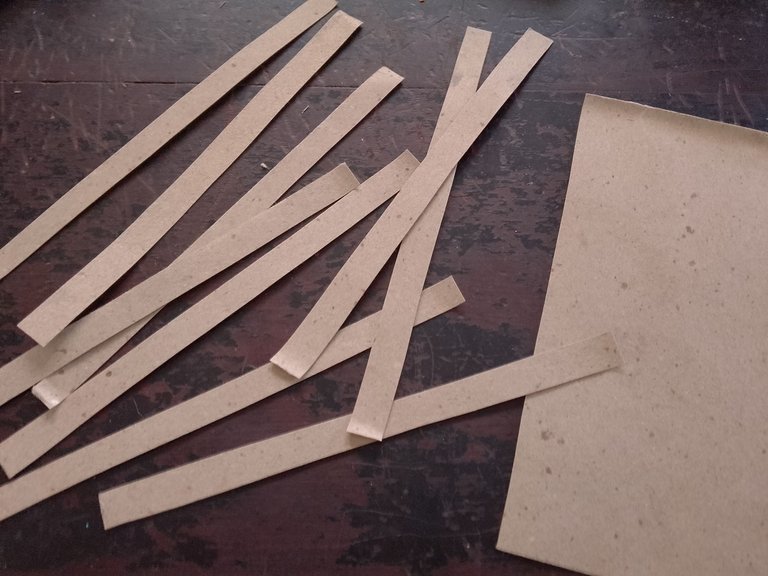 |
|---|
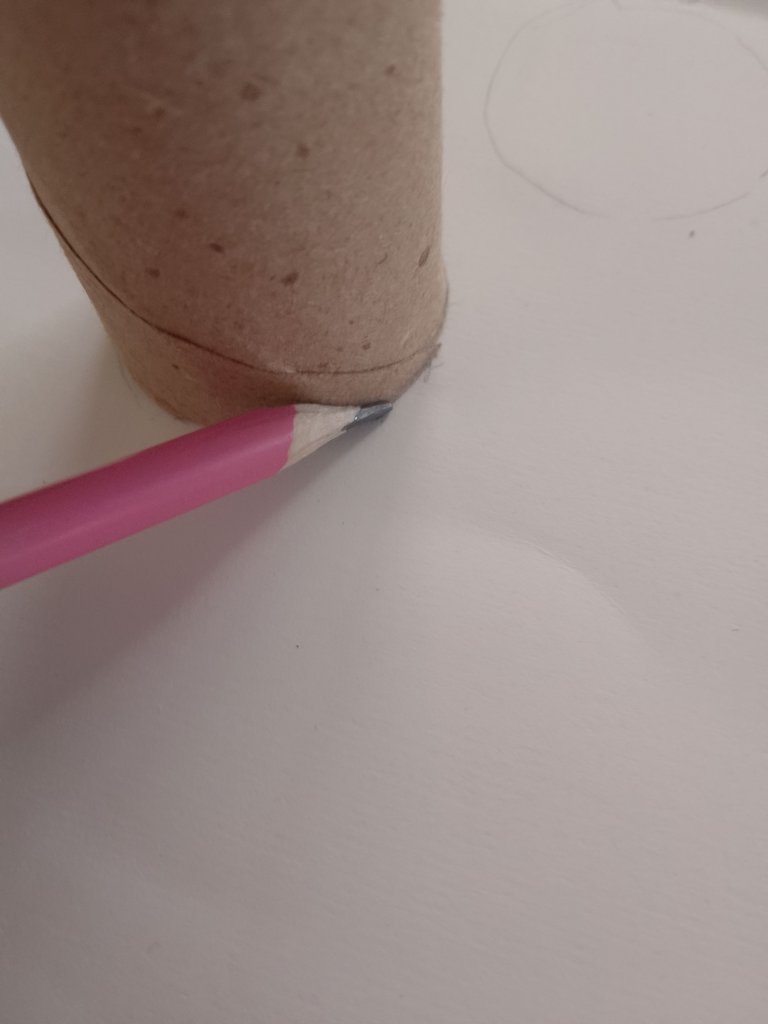 | 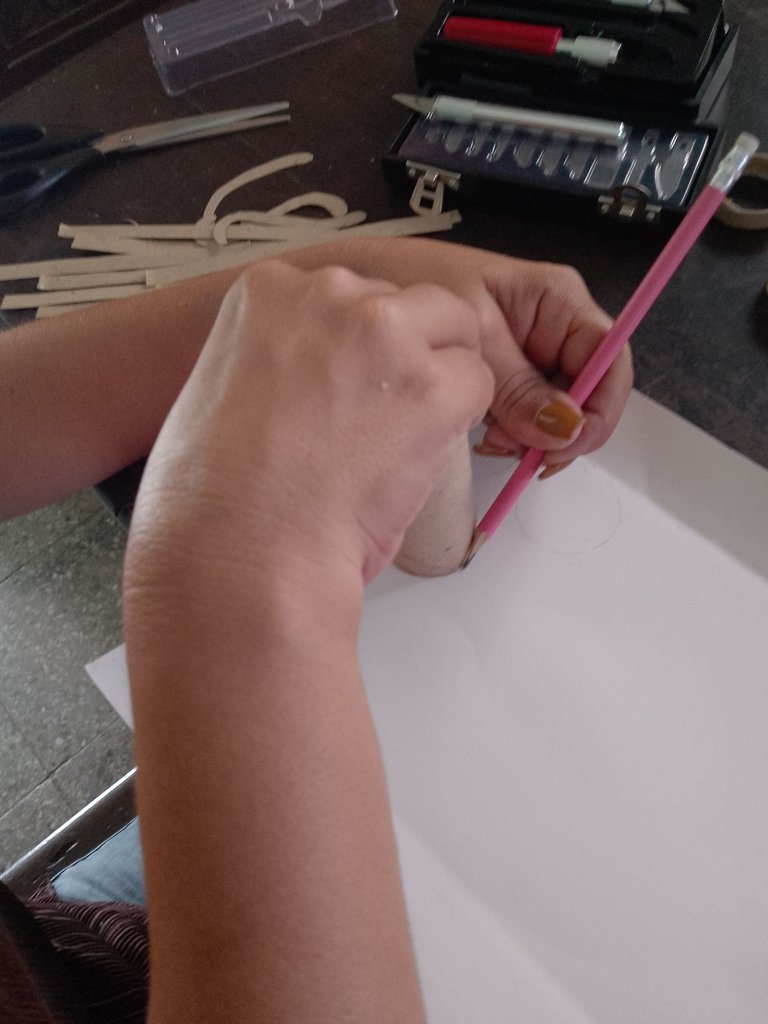 |
|---|
We'll also draw the long, thin tails, as well as the ears and their details in white, using a fine-point black marker to draw the details of the faces on the white cardboard circles.
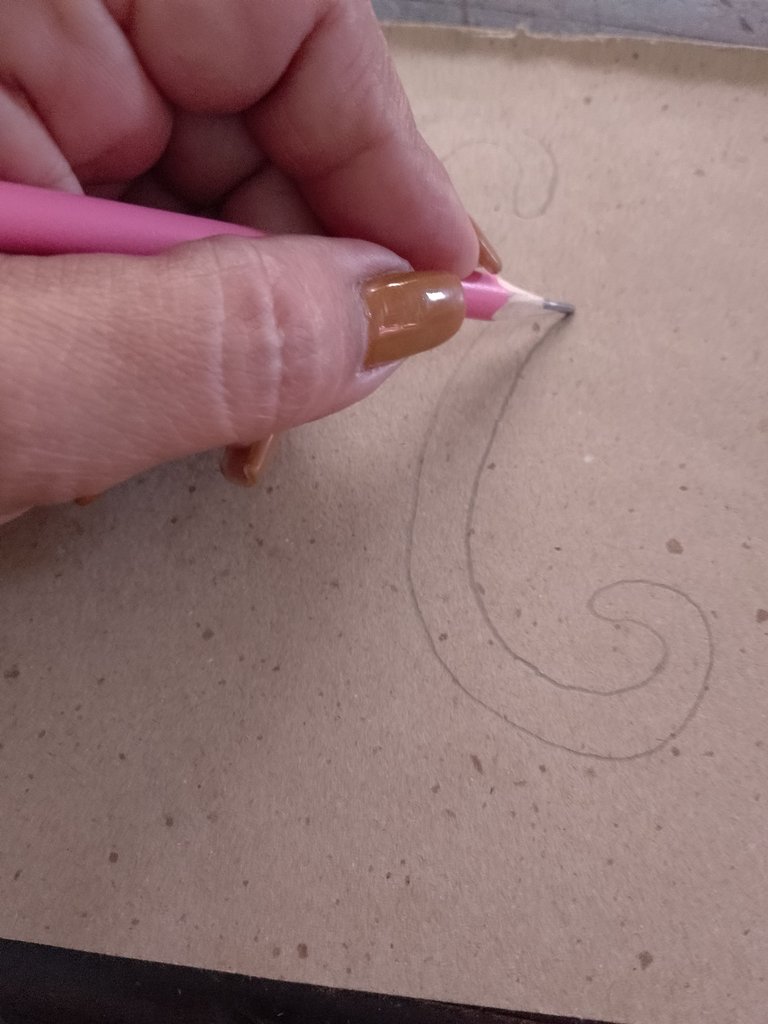 | 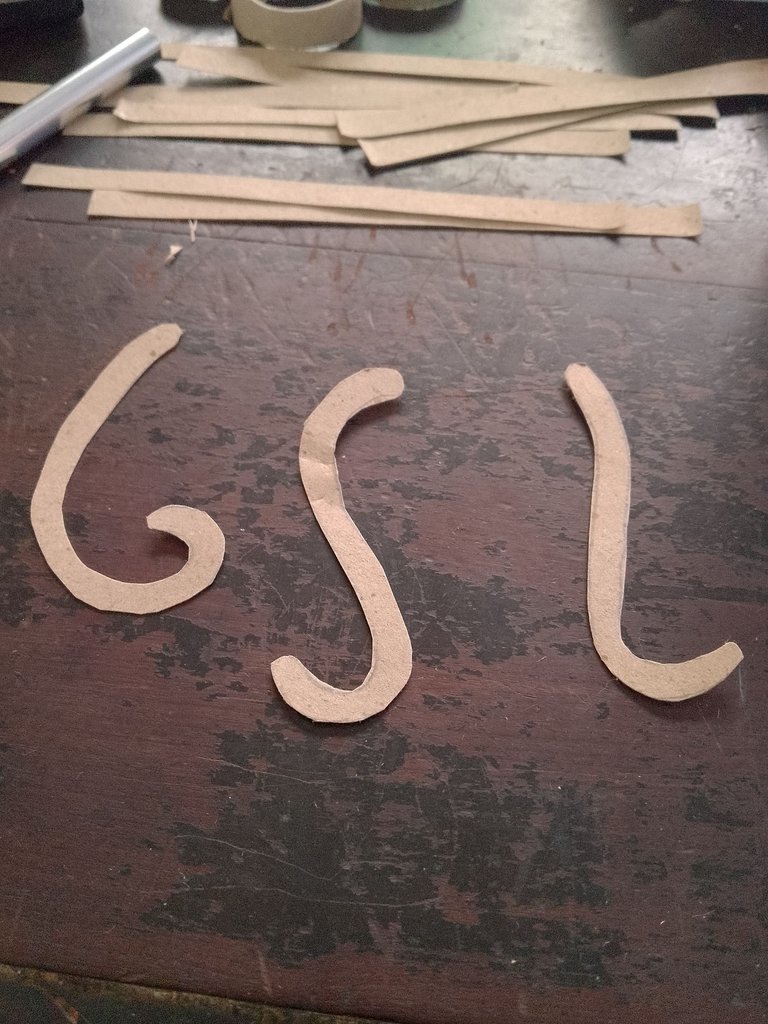 |
|---|
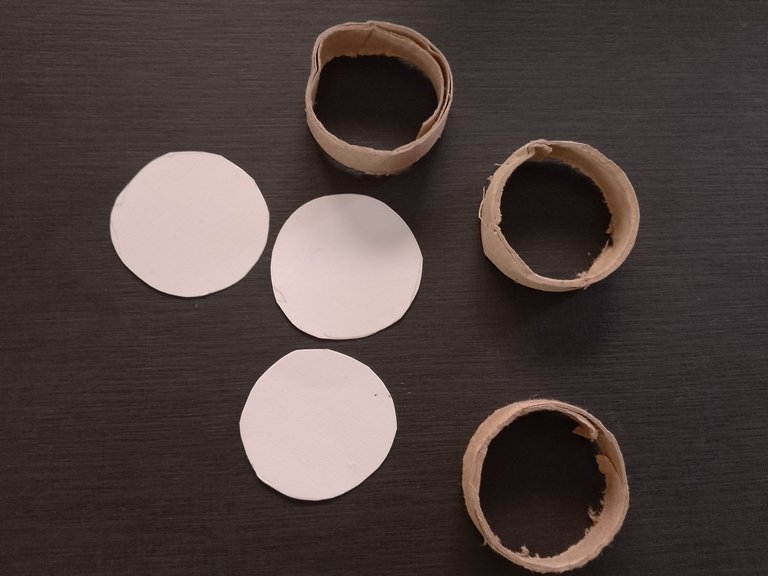 | 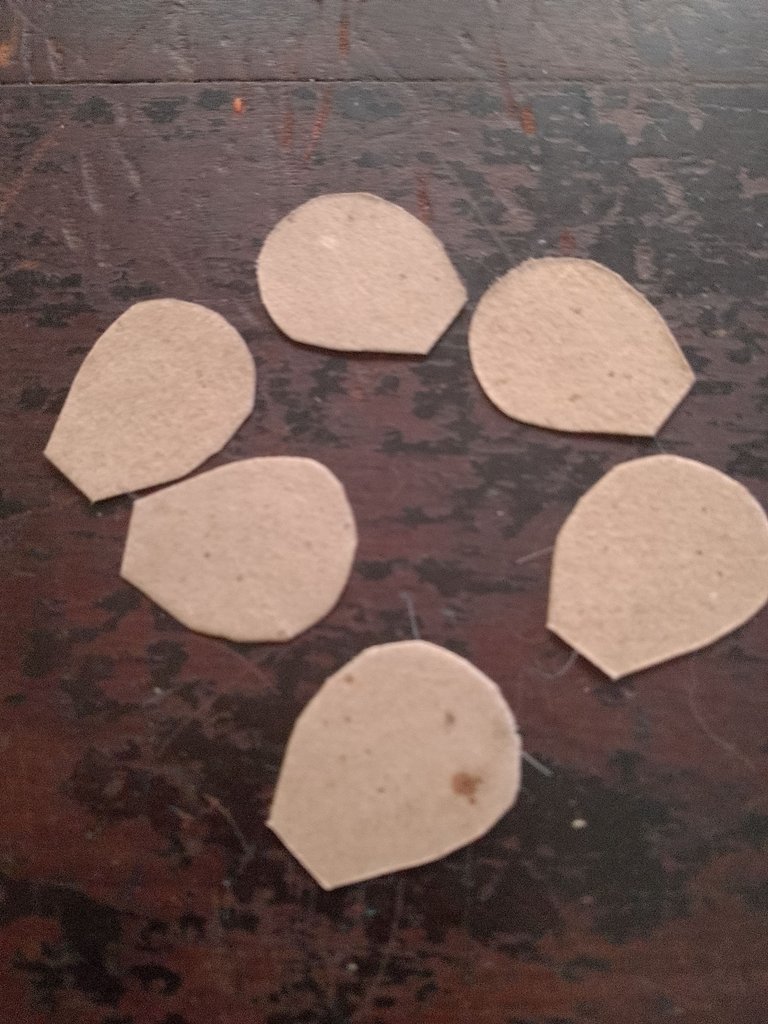 |
|---|
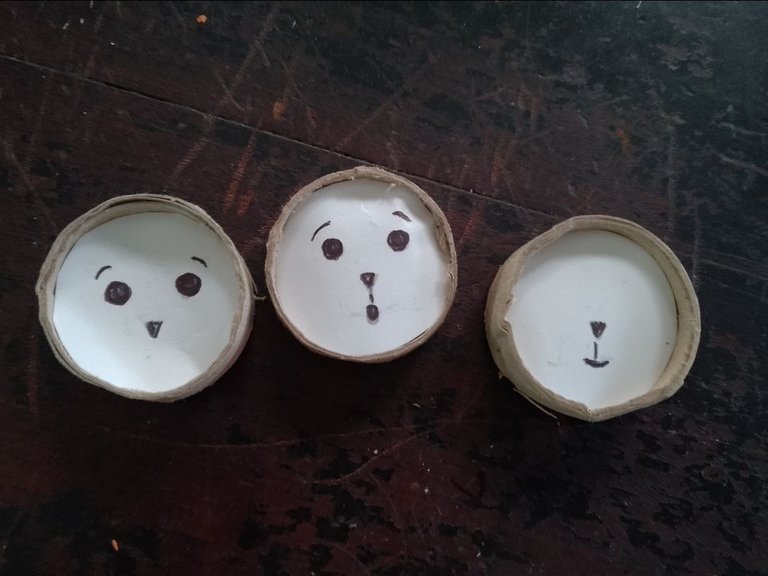
Once we have all the pieces ready, we proceed to assemble the figurines, making sure to shape one end of each cardboard cylinder, onto which we will glue the heads.
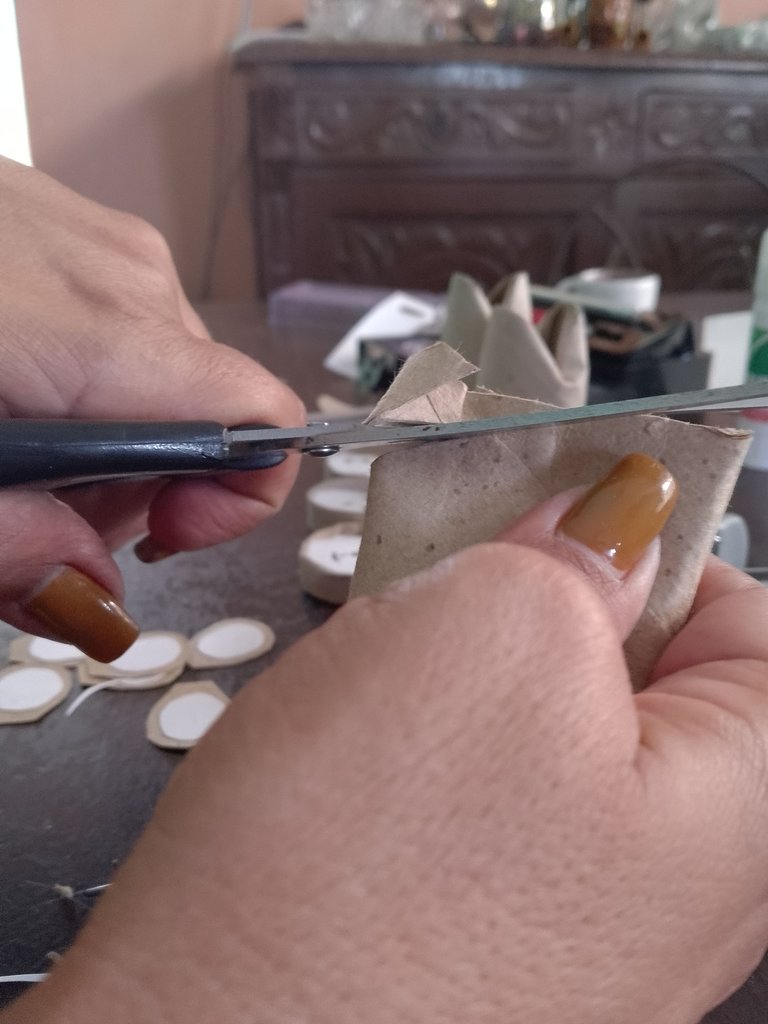 | 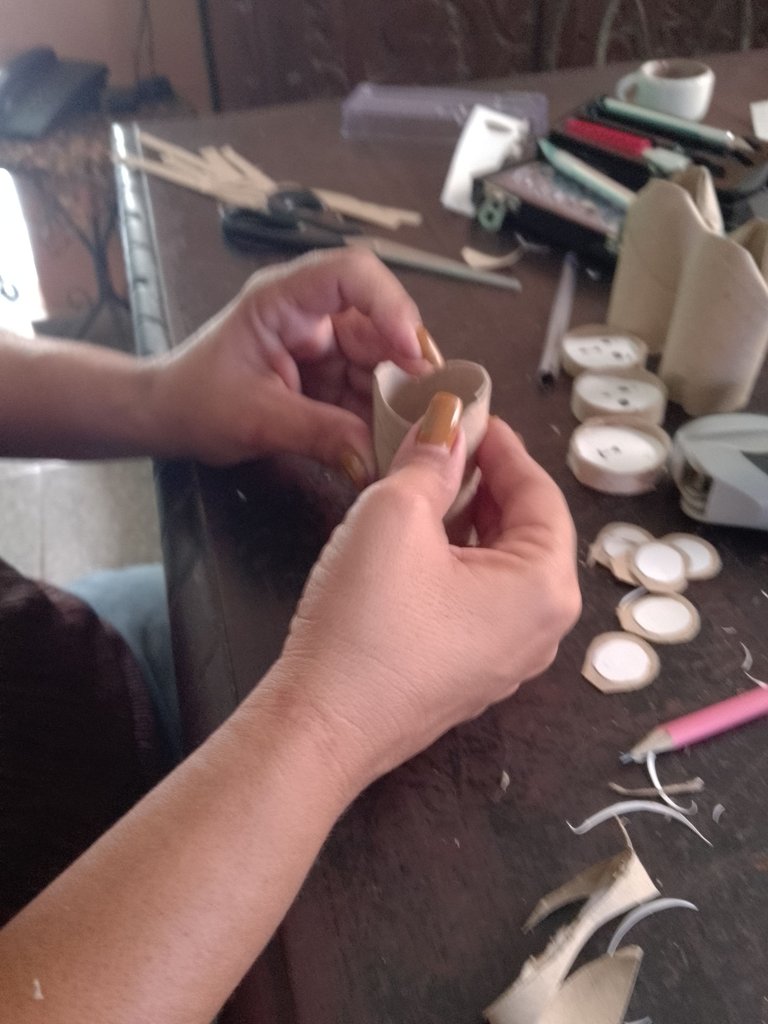 |
|---|
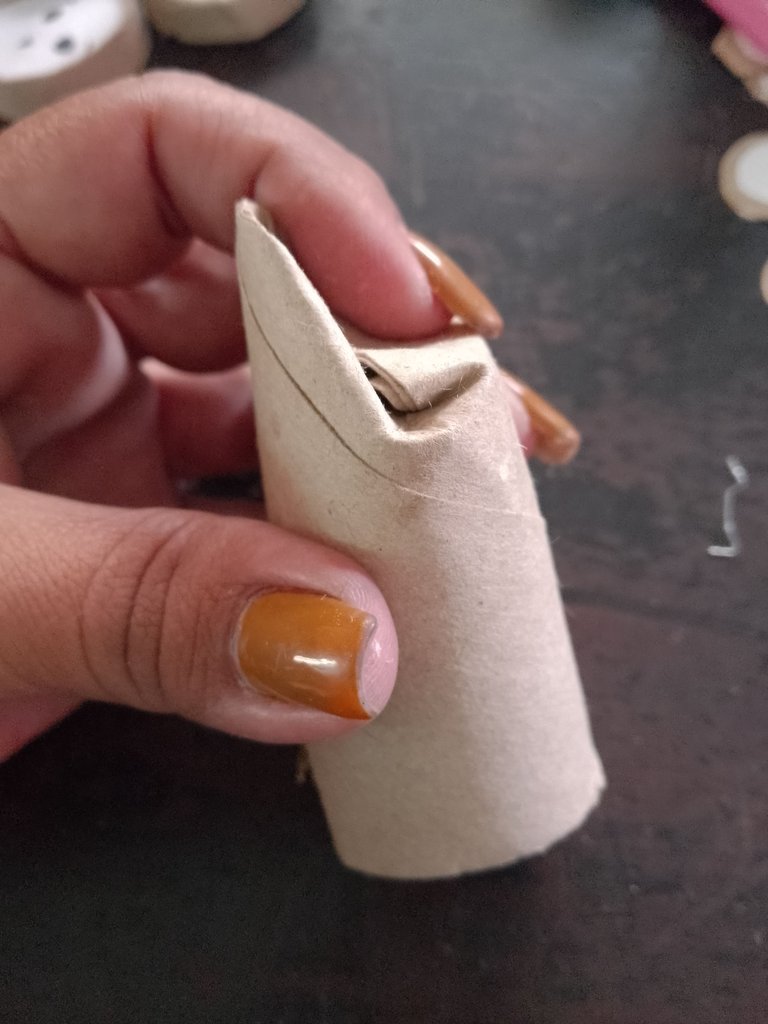
To make the heads, we'll insert the circles inside the cardboard rings. Since these don't require glue, we'll make sure the dimensions correspond exactly with the interior space so they fit together properly.
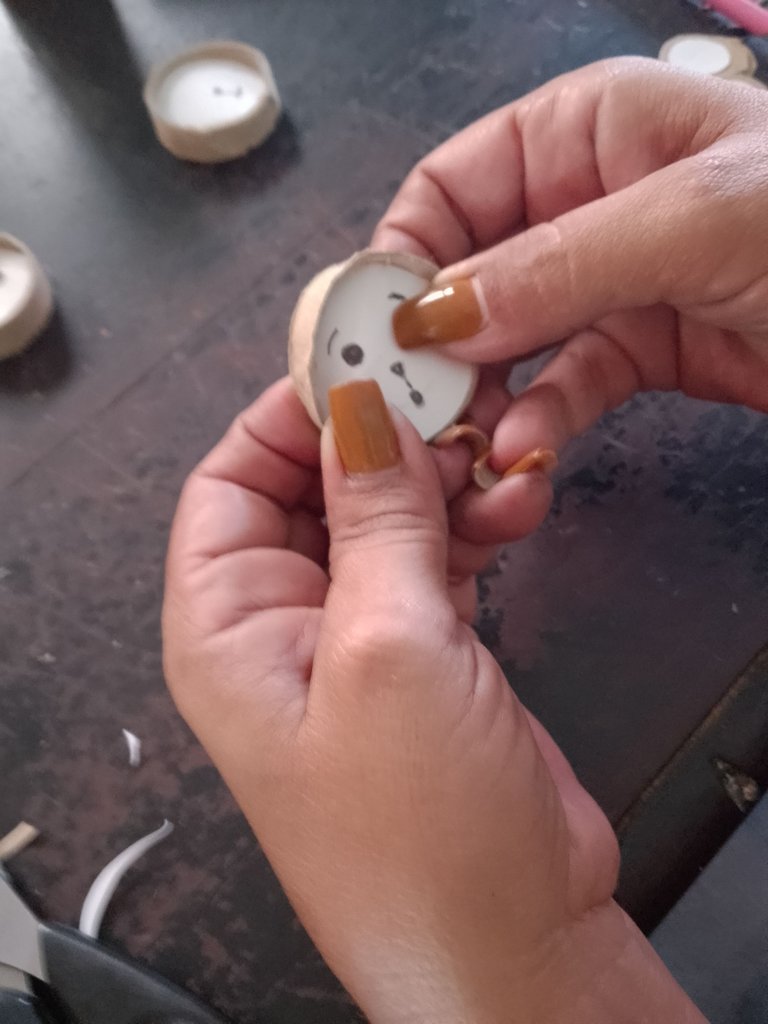 |  |
|---|
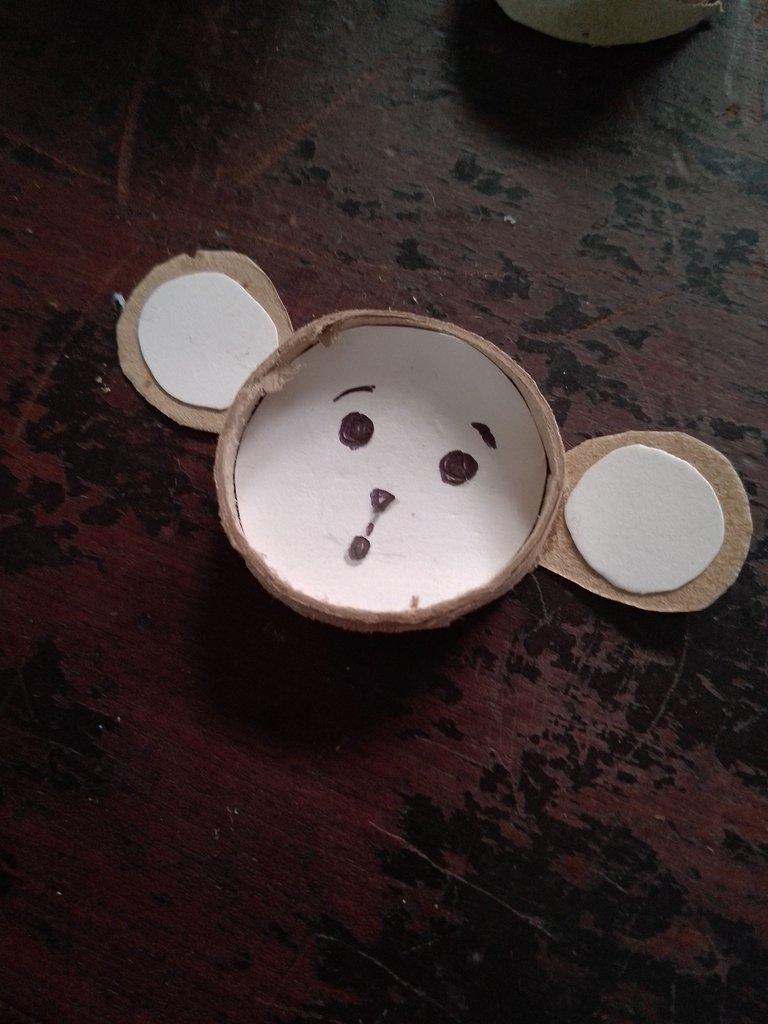
We glued the ears and then the heads to the body.
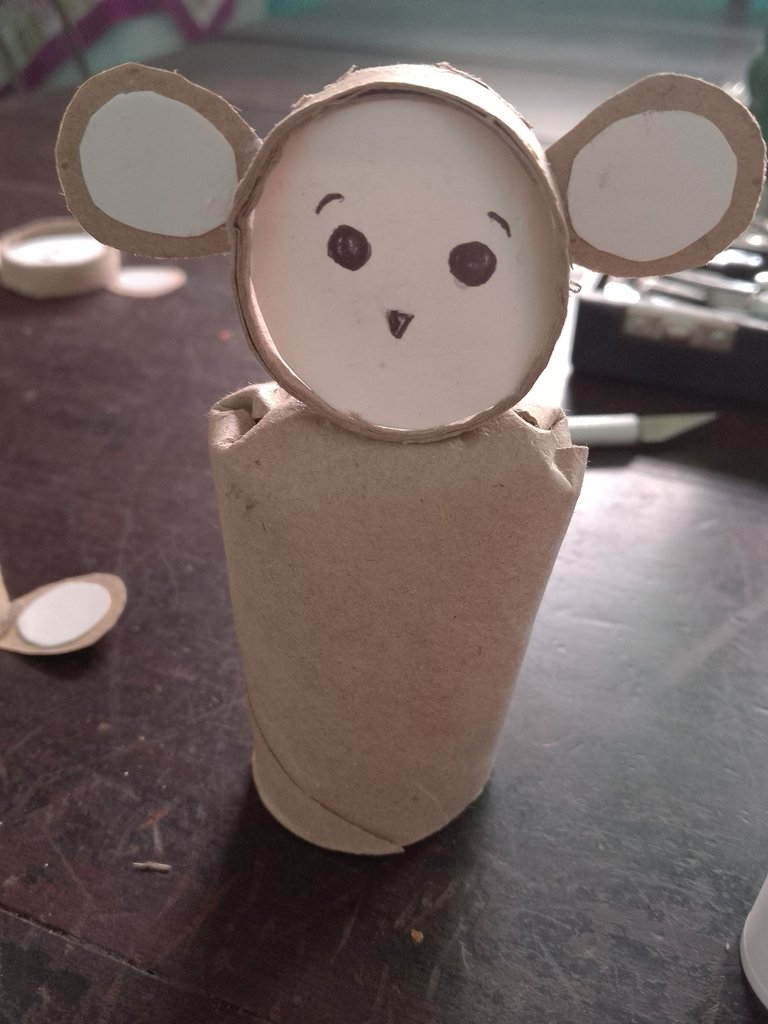
Then we took the cardboard strips and added white details, which will be the hands and feet. We glued them down, keeping in mind the intention of each character.
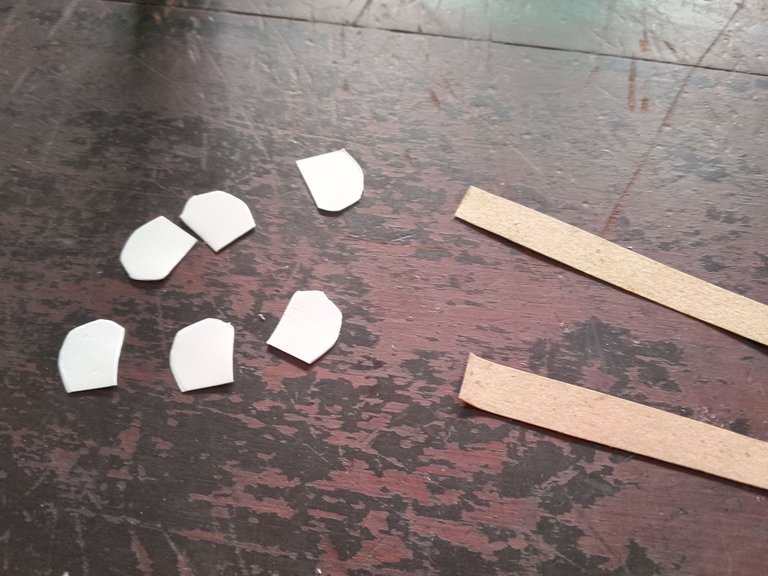
Finally, we attached the cute tails, and the figures are ready. They work well to decorate our living room, our bookcases, our kitchens, our bedrooms—in short, to give a symbolic touch to our space by personalizing it.
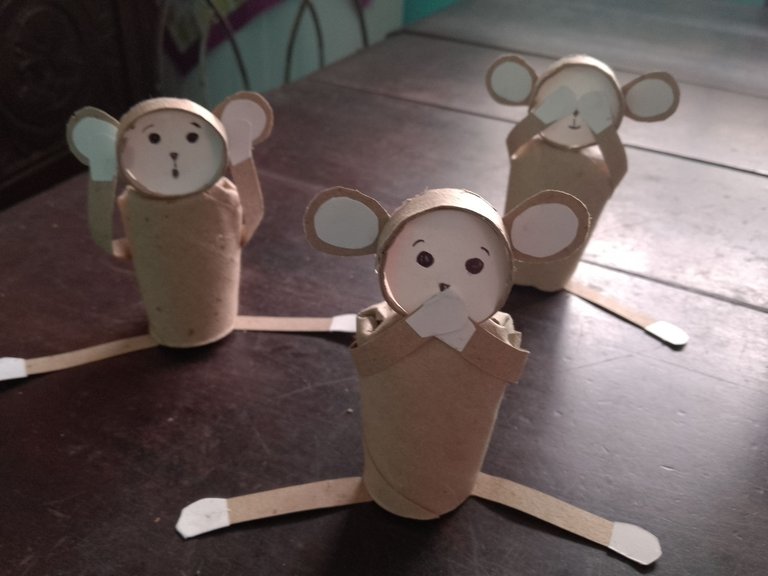
As you may have noticed, this isn't a task that requires too many resources, but rather a meaningful use of them and the intention to bring the value of material reuse, but also to provide conceptual meaning to the message we want to convey to whoever can enjoy what we have been able to achieve according to our personal poetic approach. These pieces are, in themselves, reminders of their function and of the maxim of the Chinese sage Confucius: "Hear no evil, see no evil, speak no evil."
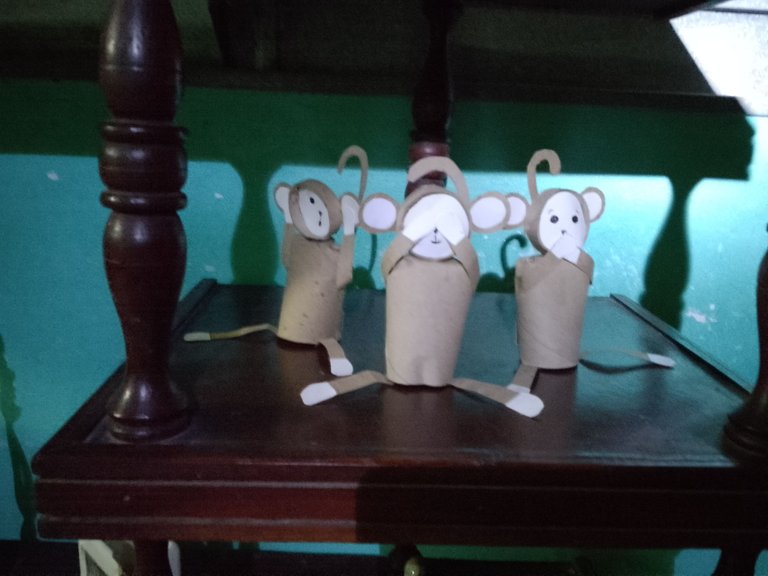
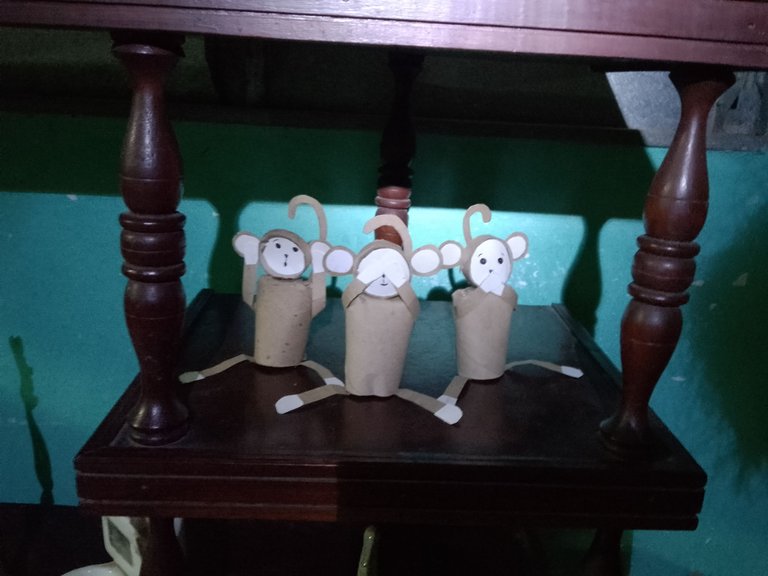
I hope you're encouraged to try this project, which can also be used as an educational resource for our children and can be made with other materials such as plastic bottles, cans... in short, anything that allows us to REDUCE, REUSE, RECYCLE.
With this proposal, I'm making my first entry in the Recycling DIY Contest, part of this wonderful creative community, #Diyhub. We're in the midst of another recycling exercise.
Until then, I send you all my warm hugs.

I invite you to visit the project DRIP - WITNESS NODE - BPUD

Support the witness and vote for TheBbhProject! Project carried out by @bradleyarrow


Cuenta la leyenda japonesa que, entre las maneras que los dioses tenían de velar por los deseos y acciones humanas, estuvo la de enviar a tres mensajeros de sabiduría. Para que tuvieran una condición cercana al hombre, los mensajeros escogidos fueron tres monos que además tenían 1 defecto y dos virtudes.
Kikazaru, el sordo, tenía sus ojos puestos en las malas acciones que luego comunicaba a Mizaru.

Mizaru, el ciego, no necesitaba de la vista pues era el encargado de escuchar el mensaje y transmitirlo a Iwazaru.

Iguazaru, el mudo, tenía la responsabilidad de recibir las quejas y decidir por los dioses el castigo a imponer sobre la maldad de los mortales.

De esta manera se define la jerarquía de cada uno y obviamente, cualquier alteración del orden significa una ruptura en el canal de la comunicación.

La cultura asiática propone cierto énfasis en el camino a la sabiduría e inspirada en esta leyenda, hoy me dispuse a tratar de reutilizar material de desecho en pos de generar figuras escultóricas que representaran a los tres pilares de la sabiduría, tratando además de utilizar el material con igual sentido de inteligencia. Creo que el reciclaje, la transformación orgánica de objetos y recursos que nos parecen inservibles en objetos decorativos o utilitarios, es una manera de aplicar la creatividad y en mayor grado la sabiduría. Es un acto de respeto ambiental.
Siendo así, elaboré mi reinterpretación de estos muy conocidos personajes, empleando tubos de papel higiénico, retazos de cartón y pegamento en barra.

La sencillez de este trabajo permite que cualquier persona pueda intentarlo. ¿Cómo hacer? A continuación les muestro.
Primero tomamos tres tubos de papel higiénico a los que les vamos a retirar, de uno de sus extremos, un aro de 1cm aproximadamente con ayuda de una cuchilla. Este aro será la estructura para la cabeza del mono.
 |  |
|---|

Luego tomamos retazos de cartón manufacturado y cartulina y vamos a marcar y cortar listas de 1 cm y circunferencias respectivamente. Estas piezas serán las patas y las caras de los monos.
 |  |
|---|
 |  |
|---|
También dibujaremos con lápiz las delgadas y largas colas, así como las orejas y sus detalles en blanco y en las circunferencias de cartulina blanca, con marcador de punto fino de color negro dibujaremos los detalles de los rostros.
 |  |
|---|
 |  |
|---|

Una vez que tenemos todas las piezas listas, procedemos a armar las figurillas, asegurándonos de modelar uno de los extremos de cada cilindro de cartón en los cuales pegaremos las cabezas.
 |  |
|---|

Para hacer las cabezas vamos a introducir las circunferencias dentro de los aros de cartón. Como estas no llevan pegamento, nos aseguraremos de que las dimensiones correspondan exactamente con el espacio interior para que logren encajar bien.
 |  |
|---|

Pegamos las orejas y luego las cabezas al cuerpo.

Luego tomamos las tirillas de cartón y les añadimos detalles en blanco que serán las manos y pies. Los pegamos teniendo en cuenta la intención de cada personaje.

Por último colocamos las simpáticas colas y ya están listas las figuras que bien funcionan para decorar nuestra sala de estar, nuestros libreros, cocinas, dormitorios, en fin, para dar un toque simbólico a nuestro espacio personalizándolo.

Como habrán comprobado no es un trabajo que demande demasiados recursos sino el empleo con sentido de los mismos y la intención de aportar el valor que tiene la reutilización material pero, también, el dotar de carga conceptual en el mensaje que queremos transmitir a quien pueda disfrutar de lo que hemos sido capaces de lograr según nuestra poética personal. Estas piezas son, en sí mismas, recordatorios de su función y de la máxima del sabio chino Confucio: “No escuchemos el mal, no veamos el mal, no hablemos el mal”.


Espero que se animen a realizar este trabajo, que de igual manera, puede ser empleado como resorte educativo para nuestros hijos y admite ser realizado con otros materiales como pomos plásticos, latas…en fin, todos aquello que nos permitan REDUCIR, REUTILIZAR, RECICLAR.
Con esta propuesta hago mi primera entrada al Concurso Recycling DIY´s, de esta maravillosa comunidad creativa de #Diyhub. Nos encontramos en otro ejercicio de reciclaje.
Hasta entonces, les dejo abrazos de luz.

I invite you to visit the project DRIP - WITNESS NODE - BPUD

Support the witness and vote for TheBbhProject! Project carried out by @bradleyarrow
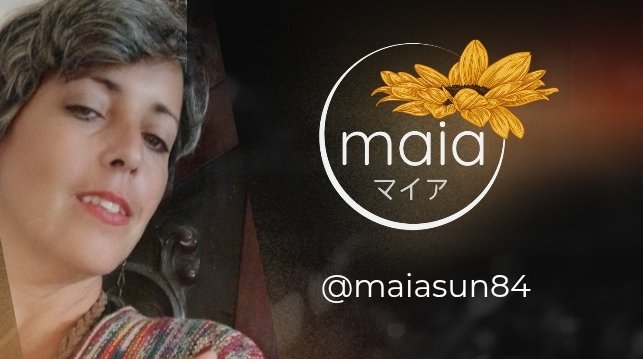





[@PowerPaul:]
Hey buddy. Greetings! Because of your participation in the CryptoCompany community you received a vote from @CryptoCompany and its trail!
Thank you for your participation & Hive a great day!
I'm really grateful for your support 🙇🏻♀️🙏🏻
🎉🎉🥳 Congratulations 🥳🎊🎊
Your post has just been curated and upvoted by Ecency
keep up the good work
Join us on the Ecency Discord
Thank you very much for supporting me, @stresskiller and #ecency's Curation Team
!BBH

Thanks a lot 🙇🏻♀️🙏🏻
Yo sé que te sonrojas con los elogios, pero es que realmente eres asombrosa. Le mostré tu post a mí esposo y no podía creer que esos muñecos fueran hechos de los conos de papel.
Ayyy, mi Tuti bella, te abrazo
Guárdame café del que nos compartiste por la mañana. Pero recuerda que lo quiero con pan 🥰
Yeah!!! 🥰😅
que ingenios jeje, buen trabajo!
what ingenuity hehe, good job!
Gracias por llegarte, amiga mía. Un abrazo y bendiciones para ti y los tuyos 🌻🤗
WOW! It is fascinating to see what you did. It looks absolutely amazing. Love it. Thank you for sharing this. Have a nice day!
selected by @rezoanulvibes
Ufff cuánta belleza y qué manera de relatar tan efectiva el proceso 👏🫂✨
Ayyy, gracias, amigo mío. Voy aprendiendo de ustedes a construir mis posts.
Ése te quedó formidable, me encantó y hasta me motivó para diseñar mis monitos, deja ver cómo me quedan 😏
Pero tienes que compartir tu proceso, fíjate ☺️
Si me quedan chulines sip 😅
Claro que sí
Que lindo, que arte tienes para hacer esas maravillas y con materiales tan sencillos.😘
Gracias por tus palabras y tu cariño, amiga mía. Te abrazo fuerte 🤗🥰🌻